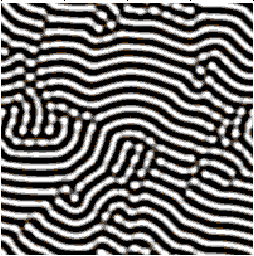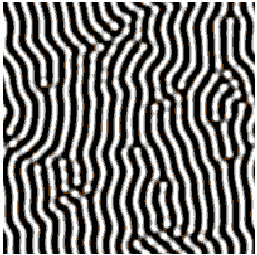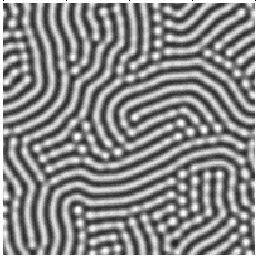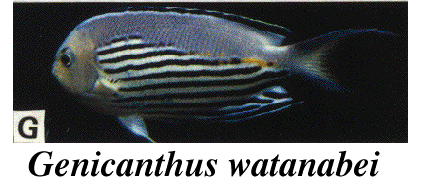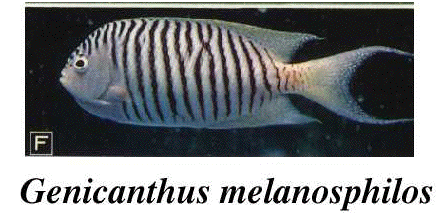| Pattern formation on skin of tropical fishes --The anisotropic diffusion reaction model-- |
|
|
| The stripe patterns observed on skin of tropical fishes have been explained by applying reaction-diffusion principle. According to the principle proposed by Turing, simple dynamics include a few substances coupled by substance-diffusion can generate spatially periodic patterns. However, the basic reaction-diffusion model can't explain the fact that most of the fish stripes are either parallel or perpendicular to the body axis, where the direction may be different between species. We study a reaction-diffusion model including anisotropy in the diffusion term to explain specificity of the direction of the fish stripe. On the fish skin, each scale comes out to the direction of body axis. It makes structural difference in epidermis between parallel and perpendicular direction to the body axis. The result depends on the ratio between anisotropy of diffusion of activator and that of inhibitor. When the anisotropy of activator is larger than that of inhibitor, the direction of stripe is likely to be parallel to the direction to which the activator diffuses faster. When the anisotropy of inhibitor is larger than that of activator, the direction of stripe is likely to be perpendicular to the direction to which the inhibitor diffuses faster. When the anisotropies are almost same between the two substances, the specificity of the stripe direction disappears. This result depends on neither other parameter value nor the form of the reaction term. From the result, we can make hypothesis that the mechanism of spatial transmission may be different between two substances in tropical fish skin. |
